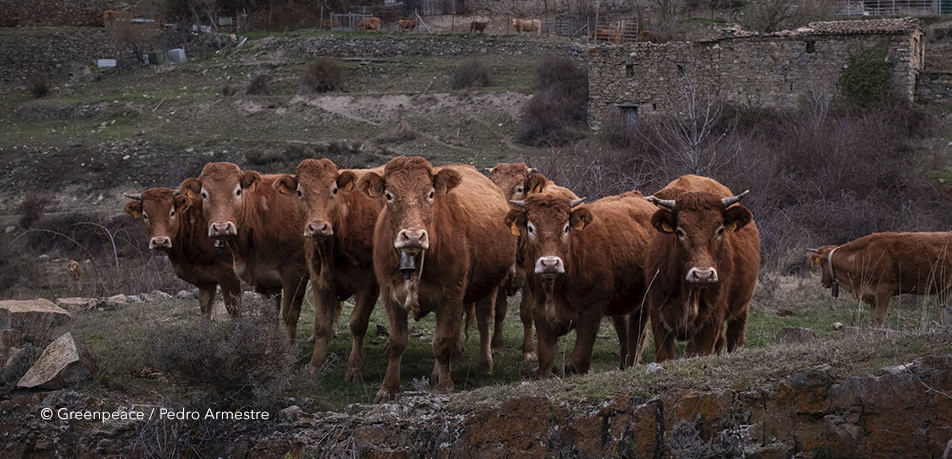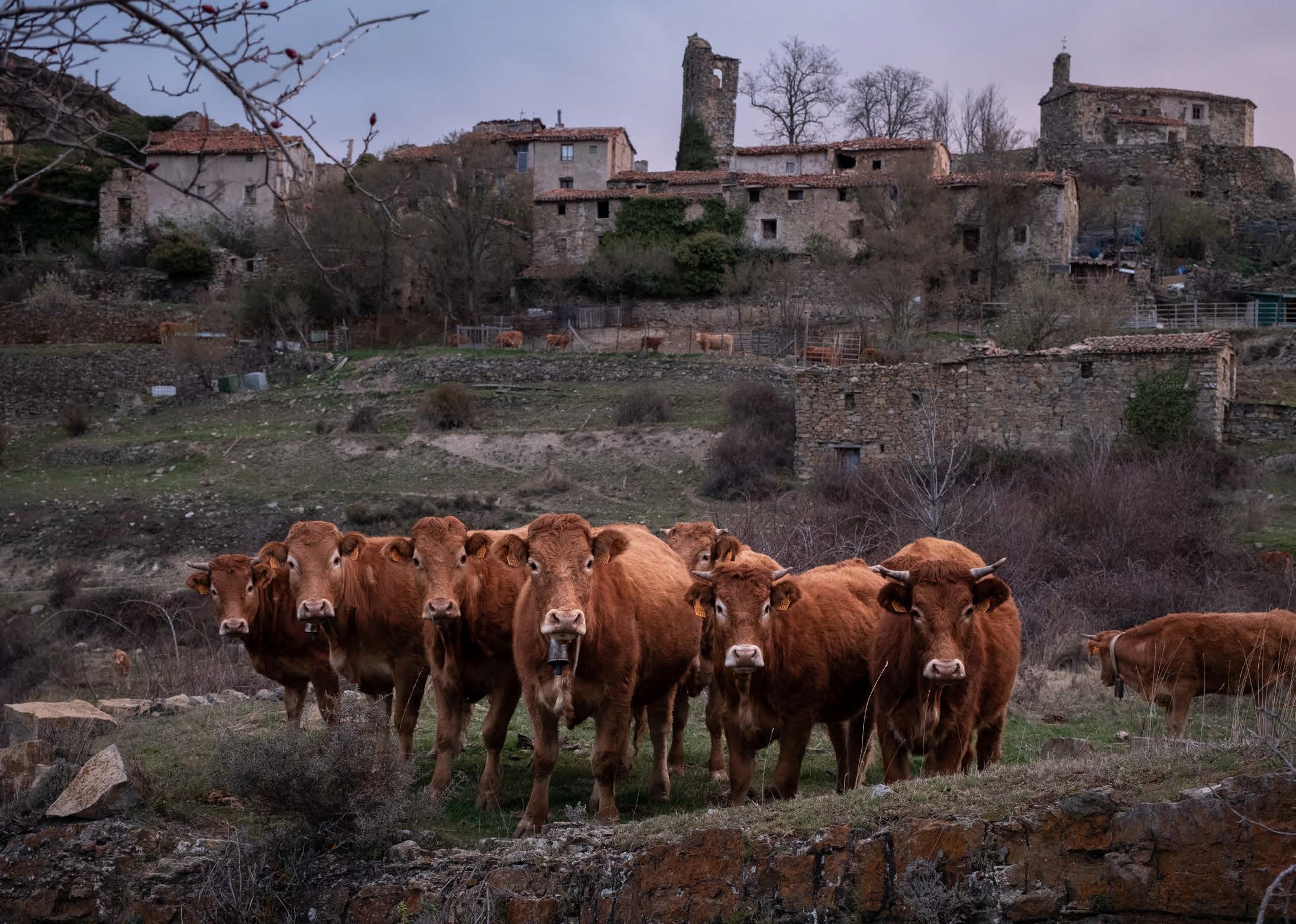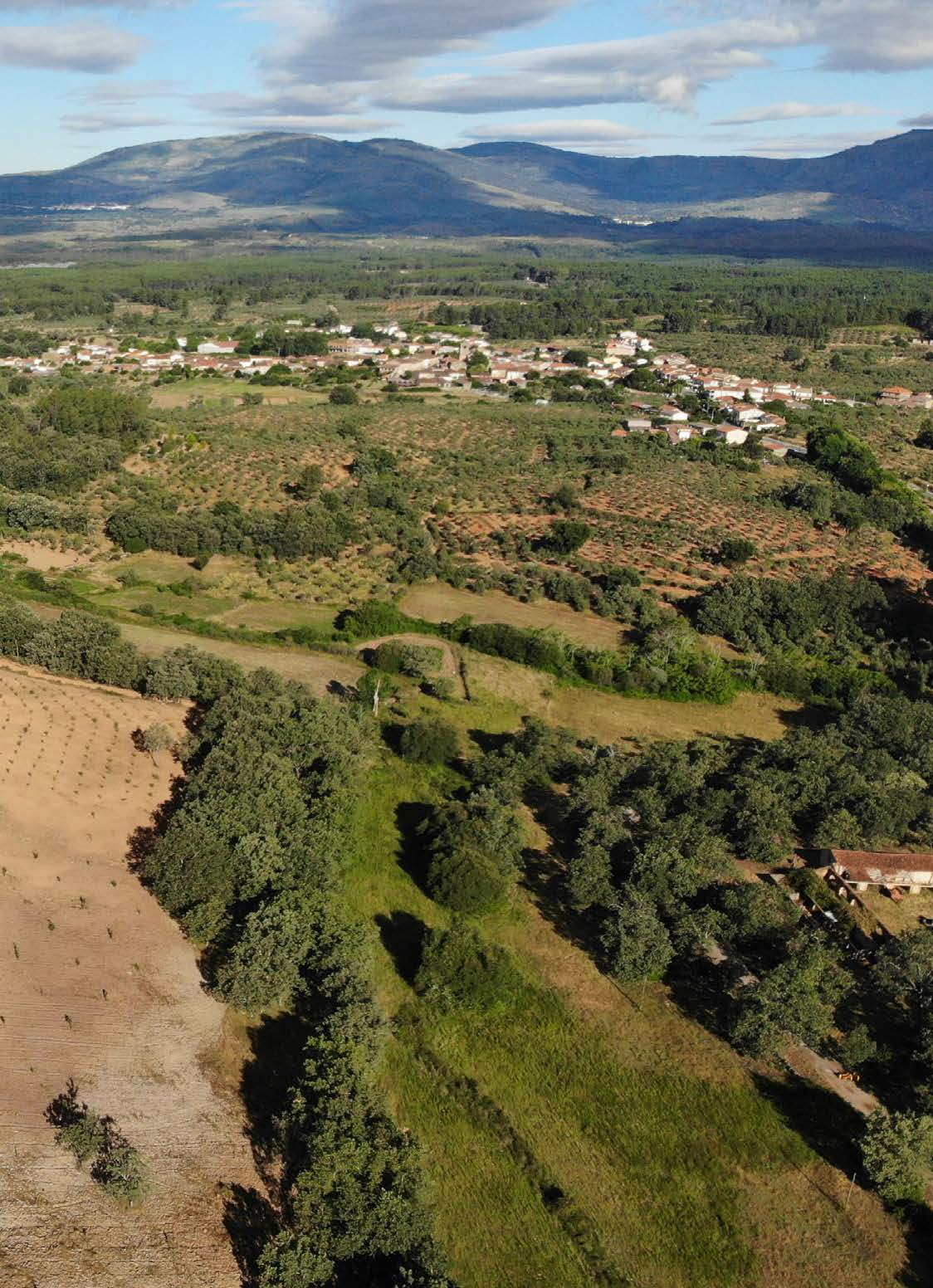Protecting Rural Life: An Act of Nature Conservation

As nature lovers and enthusiastic observers of everything it has to offer, we know the significant role that rural life plays in its stewardship and conservation. We understand and appreciate the rich biodiversity of the fields that surround our villages.

San Vicente de Munilla, La Rioja. © Greenpeace / Pedro Armestre
This is why the idea of increasing forested areas in response to rural flight does not sound like good news to us, but a setback that calls for decisive action: we need to protect our villages and the nature around us.
Contrary to what many might think, the expansion of forests into what was once cropland is not a boon for biodiversity. Agricultural ecosystems that comprise a varied mosaic of habitats are actually more biodiverse than woodlands.
Vineyards, olive groves, pastures, rice paddies, fallows, riverbanks, scrubland, meadows, and grain fields: arable land is populated with an astonishingly wide variety of species, and its decline is pushing a great many of them to the brink of extinction.
For this reason, Greenpeace issued a recent report which raises awareness of the importance of halting this rural exodus by valuing the services that the rural environment provides, beyond keeping our pantry well stocked.
In its study, the environmental organization emphasized that the contribution of rural communities to mitigating the climate crisis is up to 34 times higher than that of urban areas, and 20 times higher when it comes to maintaining biodiversity. Greenpeace therefore calls for “urgent support and reinforcement” of the rural environment, because its role “is essential” to nature conservation and the fight against climate change.

A mosaic landscape in Villasbuenas de Gata, Cáceres, Extremadura. ©Greenpeace/Pedro Armestre
In 1950, the rural and urban populations of Spain were quite evenly balanced: 48% and 52%, respectively. By 1970, a mere 20 years later, this proportion had taken a drastic turn: only 34% of Spanish people now lived in rural areas. These days, the rural population represents just a little over 15%. Our villages are being abandoned.
Sixty-one percent of Spanish municipalities have a population of less than a thousand. In Castile and Leon, which comprises an area larger than Portugal and represents the largest autonomous community in Spain and the third largest in the EU, the rate of rural population drift is even more alarming.
According to the aforementioned report, 94% of municipalities in the province of Soria have populations of a thousand people or less. In Burgos, that number comes to 93%. In Ávila and Zamora, 92.5%, and in Salamanca, 92%. But that’s not all.
Spain currently has close to 1,300 municipalities with fewer than 100 people, and more than 4,000 (practically half of all municipalities) with fewer than 500, which means they are at risk of disappearing completely.
With regard to farming, the data provided in the Greenpeace report shows that in the past 40 years, more than four million hectares of arable land have been abandoned. This is why it is so important to introduce a real agro-ecological programme, based on the development of sustainable and regenerative agricultural practices, to bring new momentum to the rural environment and halt the loss of biodiversity.
For this to succeed, we need initiatives that encourage people to return to rural areas and guarantee them the same rights, services, and opportunities as citizens enjoy elsewhere. They can no longer endure the kind of institutional neglect and social and economic decline that force them to abandon their lands and migrate to the city.
